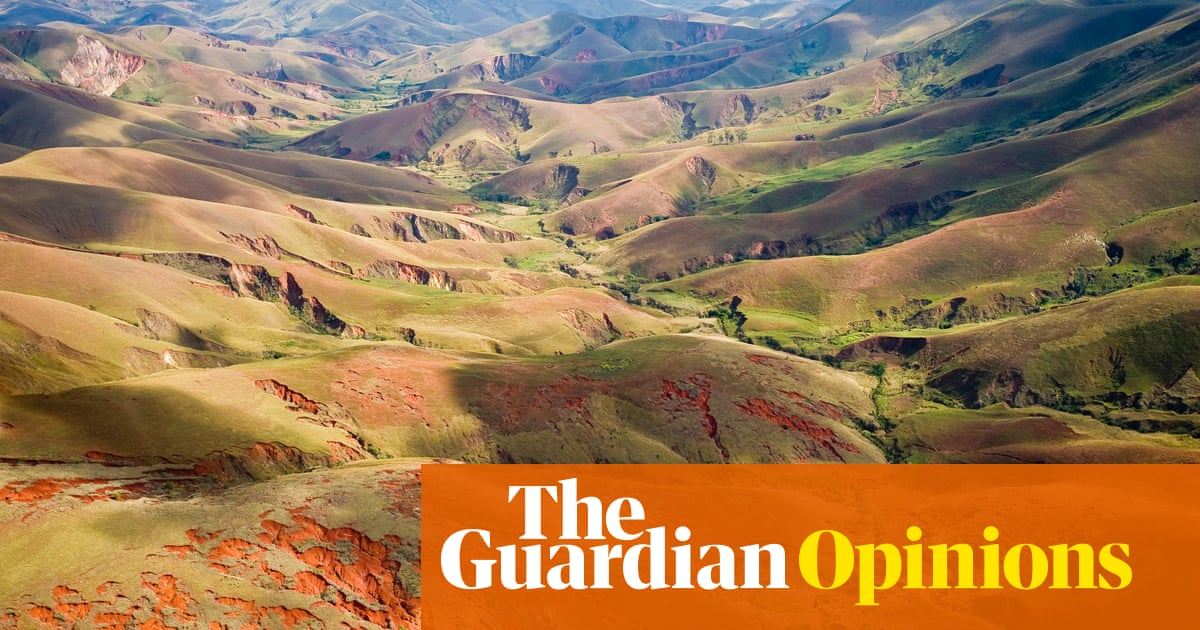From drones to genomics, science can help fight extinction: that work must begin at Cop16 | Angela McLean

Biodiversity, the incredible variety of life on Earth, is the backbone of the ecosystems that allow life on this planet to flourish. From the rich soil that nurtures our food and stores our carbon, to the green spaces that improve our mental health, biodiversity is an unsung hero upon which our societies and economies thrive.
Despite the clear benefits of – and moral arguments for – protecting nature, human activities are accelerating biodiversity loss at unprecedented rates. We are destroying habitats, overexploiting natural resources and introducing invasive species, which put plant and animal species at risk of extinction. Human-induced climate change is intensifying biodiversity loss and altering ecosystems, reducing their ability to provide natural climate solutions. Right now, in South America, devastating drought and fires – exacerbated by climate change – are destroying millions of acres of forest habitats.
Here in the UK, we are one of the most nature-depleted countries in the world. If biodiversity loss continues, we will see increased risks to food production, more severe flooding, and weakened natural defences against the further impacts of climate change. All of this could eventually significantly impact GDP.
The world’s foremost scientific authority on nature – the Intergovernmental Science-Policy Platform on Biodiversity and Ecosystem Services (IPBES) – clearly stated in its last global assessment report that conservation and sustainable use of nature can only be achieved through transformative societal change. It will require all of us to act. This can be difficult, as our lives often appear disconnected from the natural world as a result of our ever-increasing urban and online lifestyles. Science has a crucial role to play in supporting this social transformation, by helping us understand, monitor and communicate the importance and value of biodiversity.
We have only begun to scratch the surface of our natural world – scientists estimate that 86% of organisms living on Earth remain unstudied. We need to harness the range of emerging technologies and scientific techniques to track new species, understand their habitats and monitor how they are changing over time. For example, high-resolution satellite imagery is improving the monitoring of penguin colonies in Antarctica, artificial intelligence can identify and track endangered species to combat wildlife poaching, and drones can be deployed to detect forest wildfires earlier.
Scientific collaboration is essential to understanding how we are affecting the natural world. When I travelled to Madagascar earlier this year, I saw first-hand the challenge of balancing biodiversity preservation with economic development. Madagascar is home to 5% of the world’s species – 90% of which are found nowhere else – but it has lost 25% of its forests between 2001 and 2021, mainly due to agriculture.
Even so, the country has made great efforts to preserve its extraordinary biodiversity with very limited resources. The science community in the UK, including the Royal Botanic Gardens, Kew, which has a research centre in Madagascar, play an important role in supporting the work of Malagasy scientists. The local scientists at Kew’s Madagascar Conservation Centre are documenting and protecting the country’s unique plants, like its endangered orchids, as well as supporting cultivation of diverse indigenous crops that can help increase food security.
Some conservation science issues are tricky to navigate, but important to tackle. For instance, the natural world contains a wealth of valuable genetic data. The scientific capability to decode and digitally archive this data – known as digital sequence information (DSI) – is considered vital to biodiversity research. When a fungal disease attacked ash trees across Europe, reaching the UK in 2012, open access to DSI enabled scientists to crowdsource genetic data on ash trees that were resistant to the disease. Much of the capacity to analyse this data lies within the global north, while much of the biodiversity from which this data comes is located in the global south. It is a priority for the UK to ensure that the benefits derived from scientific technologies like DSI flow back to the biodiverse places needing protection and restoration.
And for scientific evidence to be useful, we must do science in partnership with people. We need to combine it with local knowledge and insight – many communities whose livelihoods depend on nature already know a lot about how to protect it. The Flow Country, in northern Scotland, is an example of a site here in the UK that focuses on restoring one of the world’s largest blanket bogs in partnership with the local community. Plans to revitalise the landscape have been collectively developed to ensure they benefit local people – the crofters, farmers, landowners, businesses and residents in the area.
These collaborative efforts highlight the importance of integrating scientific research with local expertise to protect and restore biodiversity. As countries come together in Colombia this month at the 16th meeting of the UN Convention on Biological Diversity (CBD), I urge nations to ensure science is at the heart of their commitments and, to collaborate with one another and local stakeholders to protect our planet. Conserving biodiversity is not just an environmental imperative; it is crucial to secure a healthy and prosperous future for all.
Source link




